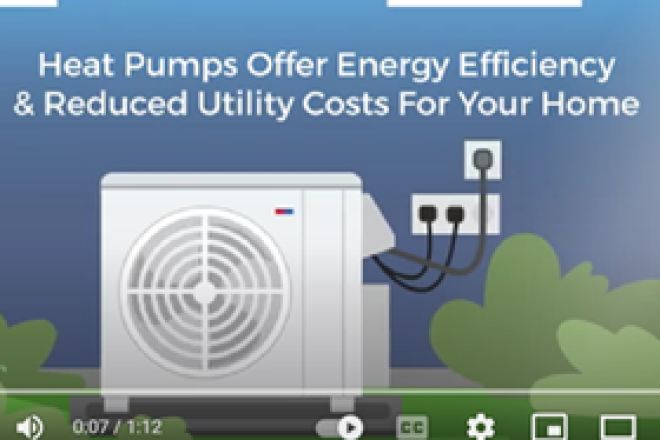
4 Steps You Can Take to Decarbonize Your Home
Whether through a gas stove, a water heater, the car in your garage or the electricity coming from the power company, most American homes today still rely heavily on fossil fuels.
However, if you’ve considered taking steps to decrease the amount – or completely discontinue the use – of fossil fuels in your home, there has never been a better time.
The Inflation Reduction Act, which was signed into law earlier this month, provides many incentives that you can take advantage of to lower your energy usage and electrify your home.
Let’s look at four steps that you can take and what incentives may be available:
1. Lower your home’s energy usage with weatherization.
Before making any large upgrades to your home, such as buying solar panels for your roof or replacing your furnace, it’s always a good idea to start with an energy audit, which will identify where your home is wasting energy and identify specific steps for improvement.
Fortunately, the new law’s Energy Efficiency Home Improvement credit provides you with up to $1,200 in annual tax credits that can be used for an energy audit and related improvements, such as air-sealing materials, energy-efficient windows and more. Like many of the act’s provisions, depending on your annual income, you may be eligible for even more incentives.
2. Clean up the electricity that powers your home.
While most power companies have taken steps to decarbonize their electricity generation in recent years, the electricity being delivered to you still likely relies heavily on fossil fuels. But, if you’re interested in receiving more clean energy, the new law contains a few provisions that can help you in this area.
First, the new act extends and increases the investment tax credit (ITC) for rooftop solar that was slated to end in 2024. Now, the ITC, which allows you to deduct a percentage of a solar project’s costs on your federal taxes, rise to 30 percent until 2032. In addition, community solar, which allows renters and others unable to invest in rooftop solar to access some of the benefits, is expected to expand significantly due to new incentives.
3. Both heat and cool your home with a heat pump.
Did you know that one humble home appliance can both heat and cool your home? And do it more efficiently and cost effectively than many furnaces and A/C units? The air-source heat pump, long a favored technology of energy efficiency experts, might now see its day in the sun due to the Inflation Reduction Act.
According to an analysis by the nonprofit Rocky Mountain Institute, heat pumps are between 2.2 and 4.5 more efficient than even an ENERGY STAR-certified gas furnace, so installing one can help you significantly cut emissions from heating your home. Under the new law, there are potentially up to $2,000 in tax credits and up to $8,000 in upfront discounts for switching to an electric heat pump – though, like in other areas, your incentives will depend on your income level and other factors.
4. Prepare your home for future electrification projects.
If you have plans to continue to electrify and decarbonize your home, you may want to take advantage of some of the incentives in the new act to prepare your home. Many homes will need upgrades like a new electrical panel or new wiring to prepare for an increase in electricity usage. The Inflation Reduction Act contains upfront discounts of up to $4,000 for a new panel and up to $2,500 for new wiring, and there may also be smaller tax credits you can access.
The new law contains many more provisions than these, including some related to home battery storage, electric vehicles (both new and used), heat pump water heaters, electric stoves and more.
In addition, with the HOMES rebate, you can get between $2,000 and $8,000 (depending on your income) when you can demonstrate a certain level of home energy savings from your upgrades. For example, if you can demonstrate a reduced energy footprint of 35 percent and you fall into a low- or moderate-income bracket, you can access the full $8,000 – in addition to the other rebates and tax credits mentioned above.
If you are interested in decarbonizing your home, there may not be a better time to do so. We recommended using online resources, such as this guide from EnergySage and this savings calculator from Rewiring America, to begin planning your journey.


